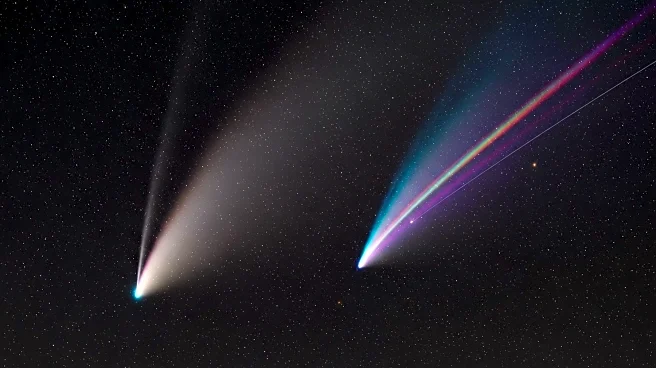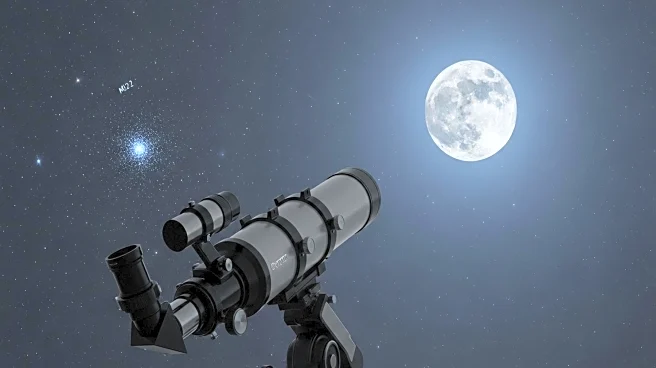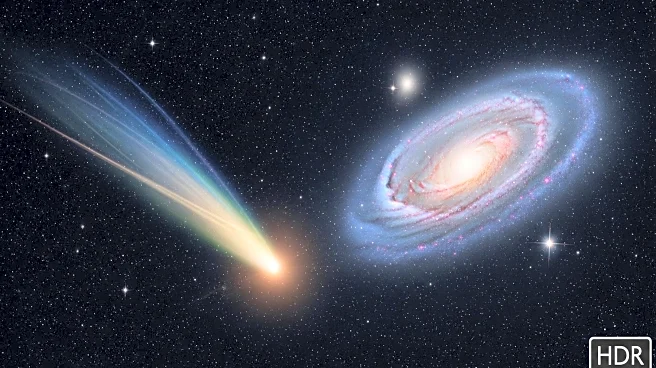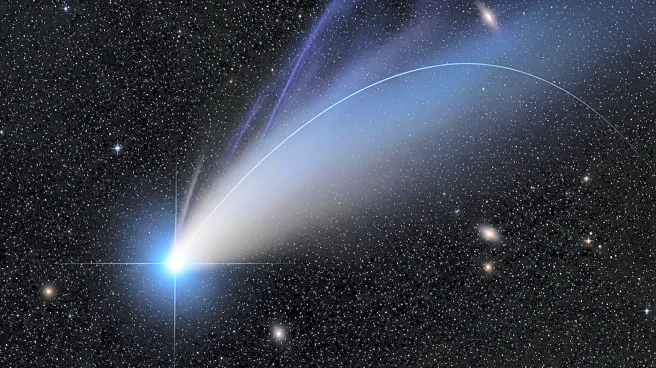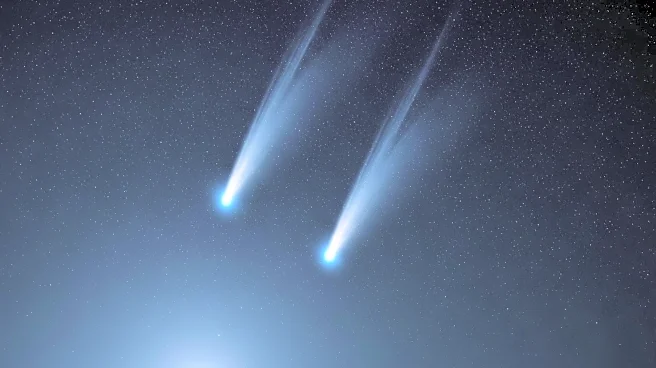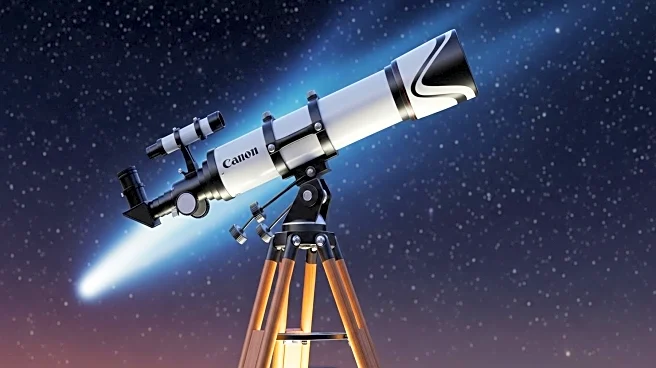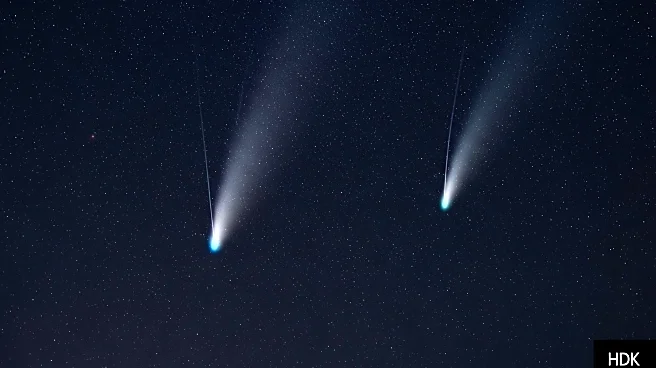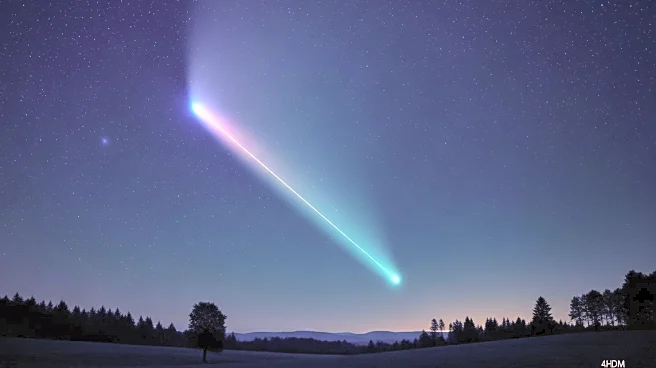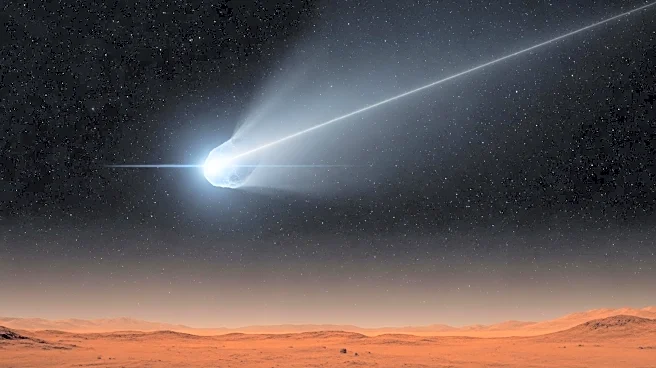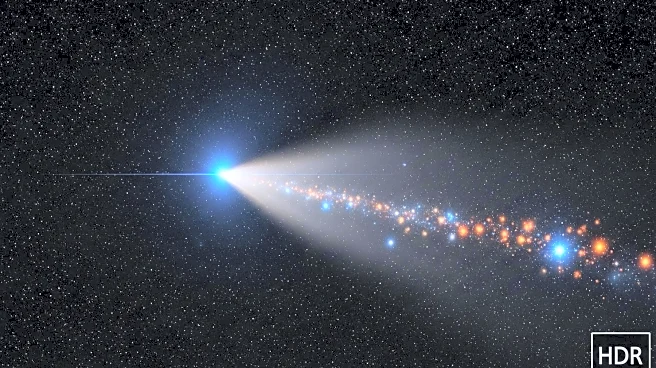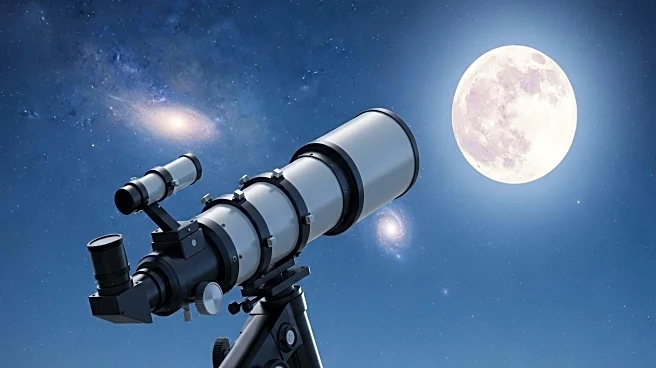What is the story about?
What's Happening?
Two newly discovered comets, C/2025 A6 Lemmon and C/2025 R2 SWAN, are making their closest approaches to Earth this month, providing a rare opportunity for sky-gazers. Comet Lemmon was discovered on January 3, 2025, while Comet SWAN was detected on September 10, 2025. Both comets have long-period orbits, meaning they will not be visible again for hundreds of years. Comet SWAN will be closest to Earth on October 20, coming within 24 million miles, while Comet Lemmon will be closest on October 21, at 55 million miles. These comets are visible in the early evenings and just before sunrise, respectively, offering a limited window for observation. Researchers are keen to study these comets to learn more about long-period comets, which originate from the Oort Cloud at the edge of the solar system.
Why It's Important?
The appearance of comets SWAN and Lemmon offers astronomers a unique chance to study long-period comets, which are remnants from the early solar system. These comets provide insights into the original building blocks of planetary systems, as their ices begin to sublimate when they approach the sun. Observing these comets can help scientists understand the formation and evolution of the solar system. For the public, this event is an exciting opportunity to engage in backyard astronomy, as Comet Lemmon may be visible with binoculars or even the naked eye. The study of these comets also contributes to broader scientific knowledge about celestial bodies and their trajectories.
What's Next?
Comet Lemmon is expected to brighten through early November, while Comet SWAN will fade rapidly. After November, Comet Lemmon will only be visible from the Southern Hemisphere. Observatories and amateur astronomers will continue to monitor these comets, using tools like binoculars and telescopes to capture images and data. The Virtual Telescope Project will provide a livestream of the comets for those unable to view them directly. This event may inspire further research into long-period comets and their role in the solar system's history.
Beyond the Headlines
The discovery and observation of comets SWAN and Lemmon highlight the importance of ongoing sky surveys and the role of amateur astronomers in identifying celestial phenomena. These comets serve as a reminder of the dynamic nature of the solar system and the potential for new discoveries. The study of such comets can also inform future missions to explore the outer reaches of the solar system, potentially leading to new scientific breakthroughs.
AI Generated Content
Do you find this article useful?
